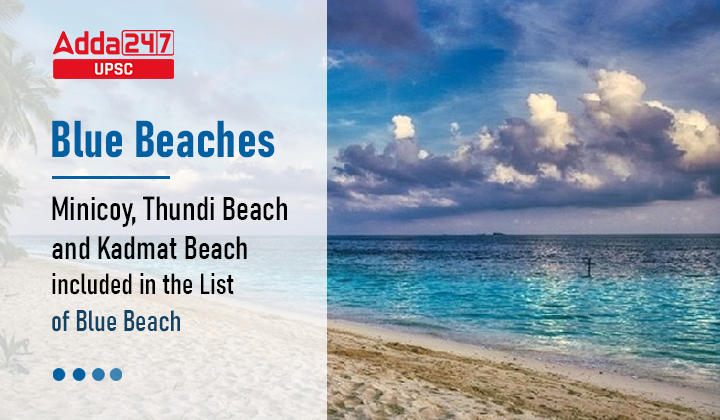Table of Contents
List of Blue Beach in India: Why important for UPSC Exam?
Blue Flag Certificate: Blue beach certificates are a recognition of cleanliness and sustainability of Beaches. List of Blue Beach in India is important for UPSC Prelims Exam (Environment) and UPSC Mains Exam (GS Paper 3- Conservation, environmental pollution and degradation).
List of Blue Beach in India in News
- Recently, Prime Minister, Shri Narendra Modi has congratulated, particularly the people of Lakshadweep as Minicoy, Thundi Beach and Kadmat Beach make it to coveted list of Blue Beaches.
- This takes the number of beaches certified under the Blue Flag certification to twelve (12).
- He also highlighted India’s remarkable coastline and lauded the passion among Indians to further coastal cleanliness.
List of Blue Beach in India
| State/UT | Blue Beaches |
| Gujrat | Shivrajpur |
| Karnataka | Kasarkod and
Padubidri |
| Kerala | Kappad |
| Andhra Pradesh | Rushikonda |
| Odisha | Golden beach |
| Tamil Nadu | Kovalam |
| Andaman and Nicobar | Radhanagar |
| Puducherry | Eden |
| Diu | Ghoghla |
| Lakshadweep | Thundi Beach
Kadmat Beach |
Key Points about Thundi Beach and Kadmat Beach
- Thundi Beach: It is one of the most pristine and picturesque beaches in the Lakshadweep archipelago where white sand is lined by turquoise blue water of the lagoon.
- It is a paradise for swimmers and tourists alike.
- Kadmat Beach: It is especially popular with cruise tourists who visit the island for water sports.
- It is a paradise for nature lovers with its pearl white sand, blue lagoon waters, its moderate climate and friendly locals.
- Both the beaches comply with all the 33 criteria as mandated by the Foundation for Environment Education (FEE).
- Both the beaches have designated staff for beach cleanliness and maintenance; and for safety and security of swimmers.
What is Blue Flag Certification?
- Background:
- 1985: Blue flag program started in France.
- 1987: It was presented to FEE and became the European Blue Flag.
- 2001: South Africa became the first country outside of Europe to join the program and this led to its changed name- International Blue Flag.
- About: Blue Flag Certification is an internationally recognized eco-label awarded by a non-profit organization called the Foundation for Environment Education (FEE), Denmark.
- The Blue Flag recognition is awarded by a jury comprising members from the IUCN, UNWTO, UNEP, and UNESCO after considering 33 parameters.
- Parameters used: The certification is based on 33 parameters which are then divided into 4 major categories. They are-
-
- Environmental education and information
- Bathing water quality
- Environmental management
- Conservation and safety services on the beaches
- Global scenario: There are more than 4000 blue flag beaches worldwide with Spain leading the number of beaches per country with this certification.
- Significance:
- Promote clean and sustainable tourism: blue flag beaches should provide clean and hygienic bathing water, along with basic infrastructure for tourists.
- It also advocates against inequality, disparity, unemployment, depletion of natural resources, health and environmental threats, pollution as well as general environmental degradation.
Wetlands in India- Steps Taken by Government



 TSPSC Group 1 Question Paper 2024, Downl...
TSPSC Group 1 Question Paper 2024, Downl...
 TSPSC Group 1 Answer key 2024 Out, Downl...
TSPSC Group 1 Answer key 2024 Out, Downl...
 UPSC Prelims 2024 Question Paper, Downlo...
UPSC Prelims 2024 Question Paper, Downlo...




